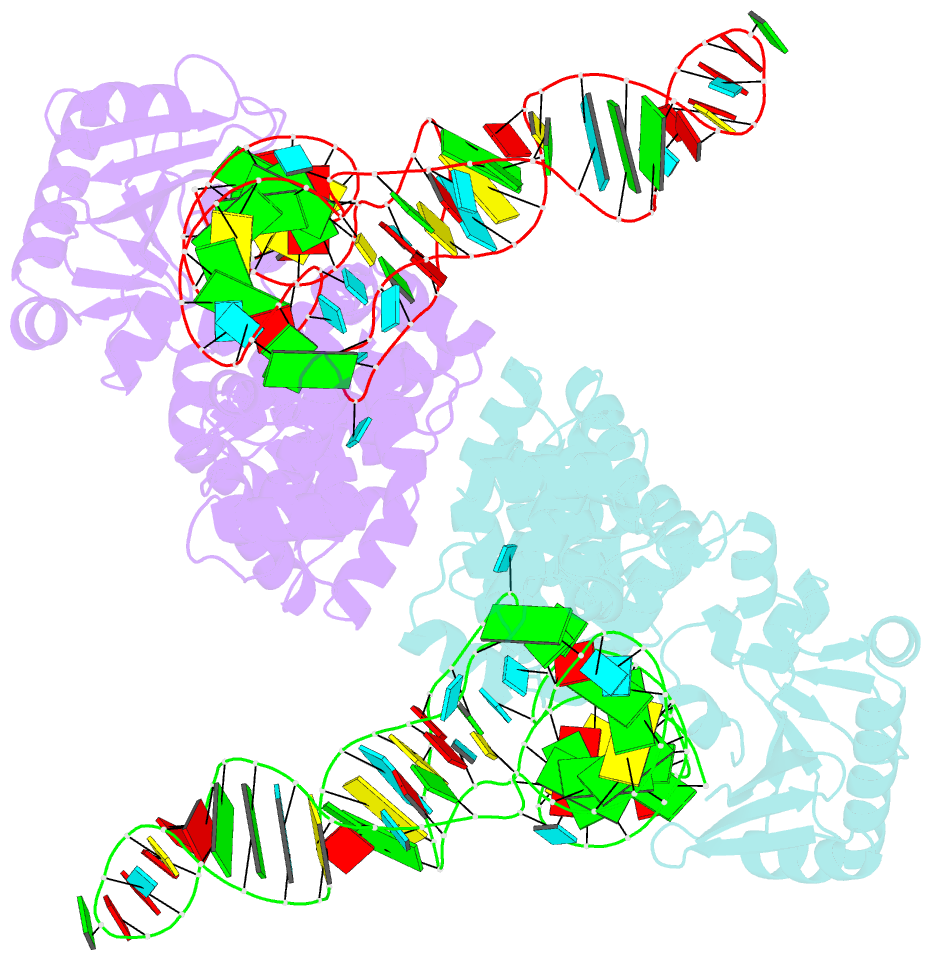Summary information and primary citation
- PDB-id
- 5hc9; SNAP-derived features in text and JSON formats;
DNAproDB
- Class
- transferase
- Method
- X-ray (2.9 Å)
- Summary
- Thermotoga maritima cca-adding enzyme complexed with trna_cca
- Reference
- Yamashita S, Tomita K (2016): "Mechanism of 3'-Matured tRNA Discrimination from 3'-Immature tRNA by Class-II CCA-Adding Enzyme." Structure, 24, 918-925. doi: 10.1016/j.str.2016.03.022.
- Abstract
- CCA-adding enzyme adds the 3'-CCA of tRNA, using CTP and ATP as substrates, and terminates RNA synthesis after completion of CCA addition, without using a nucleic acid template. The complex structure of class-II Thermotoga maritima CCA-adding enzyme and mature tRNA with 3'-CCA revealed the mechanisms by which the enzyme terminates RNA synthesis after completion of 3'-CCA addition, and discriminates 3'-mature tRNA from 3'-immature tRNA. After completion of 3'-CCA addition at the catalytic site, the 3'-CCA refolds and relocates to the release site, which is discrete from the catalytic site. The 3'-CCA forms a continuously stacked, stable conformation together with the enzyme. Consequently, the 3'-mature tRNA rotates relative to the surface of the enzyme, and only the 3'-mature tRNA is ready for release. The 3'-regions of immature tRNAs cannot form the stable stacking conformation in the release site; thus, the 3' end is relocated in the catalytic site, and the 3'-CCA is reconstructed.





